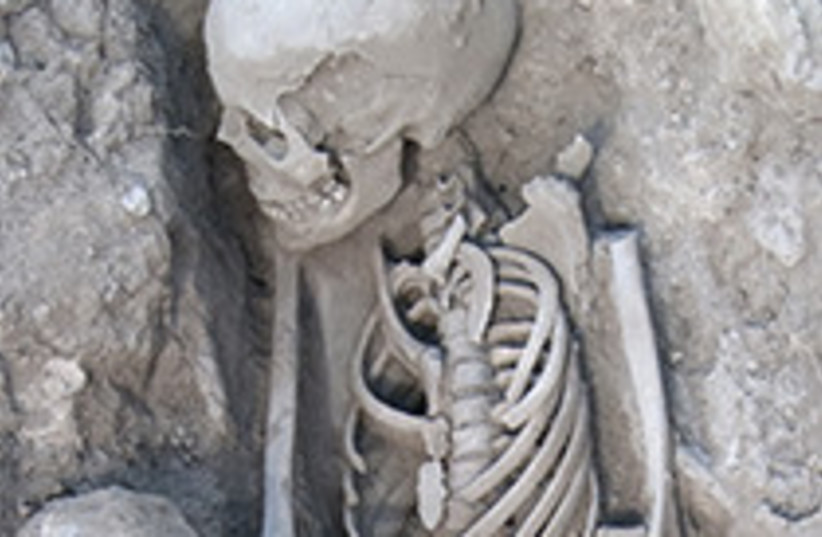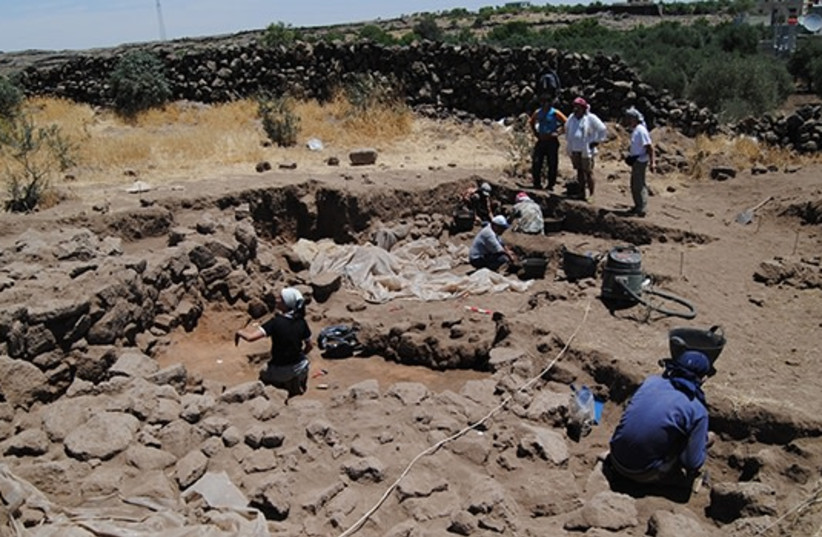 Early Muslim DNA remains found in Syria linked to Negev Bedouin, Saudis, Yemenite Jews
Early Muslim DNA remains found in Syria linked to Negev Bedouin, Saudis, Yemenite Jews
JUDITH SUDILOVSKY
To better pinpoint the genetics, the researchers conducted further analysis comparing their DNA sequences to that of 37 modern groups from the Middle East, Arabian Peninsula and the Caucasus.

Two young people buried in an Umayyad Dynasty Era grave site in Syria share some DNA with a subgroup of modern-day Bedouin from the Negev Desert in Israel and to a lesser degree with Yemenite Jews, according to a recently published study.
Until recently important bioarcheological data was more difficult to retrieve due to the poor preservation of organic materials in harsh environments. Use of new technologies more capable of analyzing degraded material allowed researchers to analyze the DNA remains of the two individuals who had been found at a burial site at Tell Qarassa in modern day Syria, believing them originally to be from the Neolithic period.
The results of their research were recently published in the peer reviewed Communications Biology journal section of Nature. The study included researchers from Spain, Sweden, Syria, Turkey, the USA, the UK, France and Australia.
“ANCIENT DNA ANALYSIS is a powerful tool to provide a genomic snapshot of this dynamic period, giving insight into past demographic processes of a currently conflicted and inaccessible territory of the Levant,” the researchers wrote.
The team
The team, coordinated by archaeogeneticist Cristina Valdiosera of the University of Burgos, Spain, explored general patterns of genetic affinity to modern populations and initially compared the two newly sequenced ancient DNA samples from the Umayyad Era individuals to that of the published DNA sequences of 262 ancient individuals from the Near East, Western Europe, North and sub-Saharan Africa from a broad set of modern Middle Eastern, Arabian Peninsula, European and North African groups.

They found that the Umayyad Era DNA sequencing did not cluster around that of any published ancient Levantine individuals, and the ancient groups they were closest to were Bronze Age Canaanites and groups from Neolithic, Chalcolithic and Bronze Age Levant, according to the report.
The two Umayyad Era individuals fell between the modern genetic variations in the Middle East and Arabian Peninsula, leaning more toward that of the Arabian Peninsula, said the researchers.
To better pinpoint the genetics, the researchers conducted further analysis comparing their DNA sequences to that of 37 modern groups from the Middle East, Arabian Peninsula and Caucasus. The results positioned the Umayyad DNA remains between groups known to originate from or inhabiting the Arabian Peninsula, including Saudi, Yemenite Jews and two Bedouin groups, including a group in today’s Israeli Negev Desert, noted the report.
The two individuals in the study had been excavated in 2009 and 2010 before the on-going Syrian Civil War broke out. They had been buried on top of a prehistoric site and analysis of their DNA revealed that one was a 14 to 15-year-old male and the other was a 15 to 21-year-old female. The remains were radiocarbon-dated to the second caliphate of the Umayyad Dynasty in the seventh to eighth centuries, which was centered in Syria.
Analysis also showed a “clear genetic differentiation from other modern-day Levantines,” said the researchers.
IN A PRESS STATEMENT from Uppsala University in Sweden, evolutionary biologist Megha Srigyan, who conducted the data analysis during her Master’s studies at the university, said the genomic results came as quite a surprise.
“The two individuals seemed genetically different from most ancient or modern-day Levantines. The most similar – though not identical – modern-day groups were Bedouin and Saudis, suggesting a possible connection to the Arabian Peninsula,” she said in the press statement.
The remains were found in two narrow graves located close to one another on the surface level of the excavation site.
“The two individuals seemed genetically different from most ancient or modern-day Levantines. The most similar – though not identical – modern-day groups were Bedouins and Saudis, suggesting a possible connection to the Arabian Peninsula.”
Megha Srigyan
The researchers noted that though buried in accordance with early Muslim funerary rituals – their bodies positioned facing Mecca – they were not buried in a traditional Muslim cemetery. This may indicate that they had been members of a nomadic group or group of pilgrims or perhaps victims of a plague pandemic that broke out in the Middle East between 541 to 749 CE. linked to a specific recorded outbreak in the area in 698 CE, said the researchers.
The research team was planning to focus on a much older time period but their study combining archaeological, historical and bioarchaeological data provided them with new insights into the early Islamic period in modern-day Syria revealing what they believe to be remains of early Muslims in the Syrian countryside, they said in the press statement.
Zawartość publikowanych artykułów i materiałów nie reprezentuje poglądów ani opinii Reunion’68,
ani też webmastera Blogu Reunion’68, chyba ze jest to wyraźnie zaznaczone.
Twoje uwagi, linki, własne artykuły lub wiadomości prześlij na adres:
webmaster@reunion68.com
